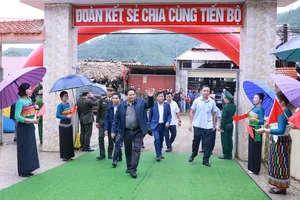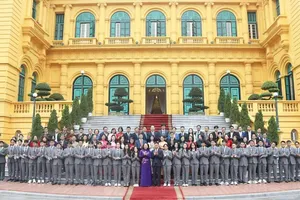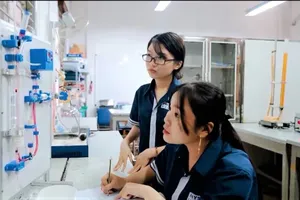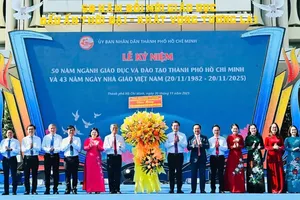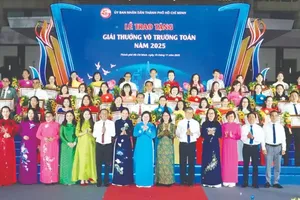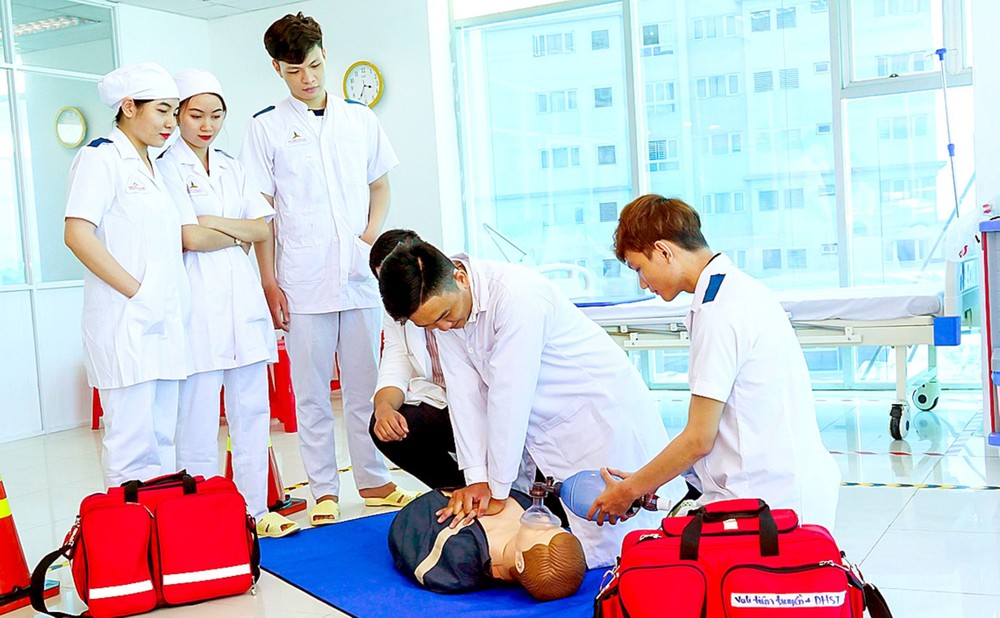
Labor quality is still low
According to former Head Dang Minh Su of the Department of Vocational Education in Ho Chi Minh City, following the merger, the city now has approximately 400 vocational education institutions. This includes 74 colleges, 71 secondary schools, and the remainder consists of vocational education - continuing education centers, along with vocational training institutions. This figure is relatively substantial when compared to other economic regions within the country.
However, when evaluating from the standpoint of training quality and the ability to fulfill labor market demands, particularly in the city's key sectors such as information technology, mechanics - automation, logistics, healthcare, and finance - banking, numerous deficiencies remain.
He revealed that according to a recent survey of more than 74,000 enterprises by the Center for Human Resource Demand Forecasting and Labor Market Information in Ho Chi Minh City, only 3.77 percent have a need to recruit human resources in 8 international human resource training sectors and 87 percent require workers to be properly trained. This shows that the number of schools is large but the quality is uneven, there is still a large gap between training and practical needs.
Professor Nguyen Trong Hoai from Ho Chi Minh City University of Economics stated that around 200,000 students enroll in more than 400 vocational training institutions annually, and the number of graduates is roughly the same. Nevertheless, the proportion of skilled laborers in the Southeast region, particularly in Ho Chi Minh City, is only about equal to the national average. While the average percentage of trained labor in the region has shown a gradual increase over time, this growth is minimal, averaging only about 1 percent per year. The low percentage of skilled labor represents a significant obstacle in the advancement of technology amid the 4.0 industrial revolution.
Removing bottlenecks to improve comprehensive quality
To address the aforementioned challenges, vocational training institutions have actively implemented various solutions. Vice Principal Tran Van Tung of VABIS International College in Phu My Ward stated that the merger of Binh Duong, Ba Ria - Vung Tau provinces and Ho Chi Minh City creates significant development opportunities, enabling vocational training institutions to engage more closely with the city's business ecosystem.
Students gain from a dynamic recruitment network, which includes internship opportunities and job placements post-graduation.
Furthermore, access to vocational training facilities in Region I (previously Ho Chi Minh City) has improved, facilitating training collaborations, level transfers, and learning exchanges.
Ho Chi Minh City possesses substantial potential in sectors such as industry, seaports, services, and tourism. The institution has been and continues to actively forge connections with businesses to provide learners with increased job opportunities while also allowing them to acquire practical experience throughout their educational journey, affirmed Vice Principal Tran Van Tung.
Principal Truong Huynh Nhu of Ba Ria - Vung Tau College of Technology emphasized the need for Ho Chi Minh City to implement a targeted training policy aligned with the specific professions and sectors required by the local economy. He urged the city to invest in upgrading infrastructure, modernizing equipment, and accelerating digital transformation in key vocational institutions to elevate training quality to regional and global standards.
He also stressed the importance of establishing a clear legal framework and incentive mechanisms to encourage businesses to participate in workforce development. This includes placing training orders, supporting vocational programs, accepting interns, and recruiting graduates.
Additionally, he recommended developing standardized training programs and enhancing faculty qualifications—particularly by sending lecturers abroad or exposing them to advanced international vocational education models.
Meanwhile, Principal Tran Hung Phong of Vietnam - Singapore Vocational College recommended that Ho Chi Minh City develop a strategic labor forecast aligned with each key occupational group. This would help guide the restructuring of the vocational education system, including merging underperforming schools to avoid fragmentation and duplication in training programs. Based on this forecast, he proposed creating a general framework for vocational education, which would then be refined by regional school groups with the support of assigned experts.
He also suggested integrating vocational education and continuing education centers into colleges to enable learners to pursue higher levels of education more easily. This would streamline career pathways and support ongoing skill development.
Experts further emphasized the need for a unified enrollment coordination mechanism to align student placement with their abilities, interests, and labor market demands. They called for each region to create a detailed map of occupational needs, serving as a foundation for setting appropriate enrollment targets.
Crucially, they advocated for building an inter-regional training–recruitment linkage ecosystem across various regions. In particular, this involves organizing job exchanges, linking businesses with training, recruitment, and salary payment processes; sharing training modules, and acknowledging inter-regional credits. This way, learners can attend one school while interning and working at another without facing administrative barriers.

